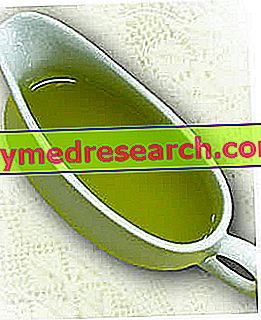What are
What are snacks?
Snacks (or "pastine") is a generic term for some sweet foods of a packaged type.

These are industrial snacks - even if the market offers quite a few artisanal alternatives - generally belonging to the group of bakery products, more specifically of pastry. Most of the snacks are leavened, with natural microbiological starters or with chemical yeast.
Did you know that ...
Many fear that chemical yeast may be unnatural and therefore unhealthy. In truth, the adjective "chemical" indicates the different principle of leavening. Compared to the natural one, composed of microorganisms that feed on carbohydrates producing gas that swell the dough, chemical yeast is made up of an active ingredient that reacts with other ingredients producing gas in a biologically independent manner.
In the collective imagination of the not too recent generations, but young enough to have experienced the birth and evolution of these foods, the snacks are represented by the classic croissant (croissant) wrapped, or the popular tart. The increase in commercial demand subsequently led to an increase in the types offered; today there are: plum cakes, various kinds of cakes, muffins, donuts, sponge cakes, etc. The snacks have therefore replaced the homemade snack, essentially for practical reasons.
Now we come to the hot spot of the question: do the snacks hurt? The answer is "too many snacks are undoubtedly bad". Nevertheless, most readers would not be satisfied with such an obviousness; too much, not just talking about snacks, but in every context. Those who are reading are most likely worried about the health of young people, to whom adults have a certain responsibility. Ultimately, mothers and grandmothers must be able to understand whether or not to give in to "urgent" requests - a reductive term, in most cases - of their own children or grandchildren.
To answer exhaustively, let us try to understand where curiosity to learn more arises. The snacks are considered inadequate by many consumers mainly for two reasons, the first of which, all things considered reasonable, while the second "a little less":
- They are too rich in fats, sugars and calories, so they favor overweight - a pressing disease that is causing the onset of related diseases, such as fatty liver steatosis, primary arterial hypertension, type 2 diabetes mellitus, hypercholesterolemia, hypertriglyceridemia and obviously metabolic syndrome - and tooth decay
- They contain harmful ingredients, especially food additives, bad fats, gluten, etc.
Before going into detail, it is essential to clarify a fact: most of the controversy over the healthiness of industrial foods arises from good intentions, but tends to develop with alarmism and sometimes leads to obsessions bordering on hysteria; there are even those who believe in conspiracy theory. With the birth and development of the internet, all this has been further emphasized, to the detriment of good information. I therefore recommend carefully selecting sources of information and not choosing them on the basis of what one "would like to believe", but rather on the basis of authority and seriousness in the use of the scientific method.
Nutritional Properties
Nutritional properties of snacks
Snacks are considered sweet foods, just like any other dessert - like ice cream, puddings, chocolate bars, biscuits etc. However their nutritional properties vary considerably based on the specific type; today there are many very different products, including dietary ones, for example: with less fat, less added sugar, fewer calories, gluten-free, lactose-free, egg-free, with more fiber, with more vitamins, etc. Defining its nutritional properties is therefore rather difficult; we will therefore make an average of the snacks most widely consumed by the general population.
Snacks have a high energy supply, supplied mainly by carbohydrates, followed by lipids and finally by proteins; the snacks rich in chocolate or spreadable creams may contain more lipids than the others - for example those without nothing or with jam. The glucides are generally above all of complex type, that is constituted by starch, but the soluble fraction (sucrose) is however very important. Fatty acids more often have a majority of the unsaturated saturated, although the latter - generally of the hydrogenated type - are far from negligible; in the next paragraphs we will go into more detail. The proteins, coming from flour and almost always also from eggs and milk, have at least an average biological value, even if, in most cases, they have a high biological value.
Did you know that ...
The biological value of dietary proteins is the qualitative and quantitative ratio of the essential amino acids that compose them, compared to the human peptide model.
Snacks always contain dietary fiber; the integral ones, logically they are richer than the others. As a traditional recipe, almost all of them provide cholesterol, gluten and lactose; may contain ingredients with histamine, such as natural yeast, or histaminoliberators, such as chocolate. The quantity of purines is usually low, as is that of amino acid phenylalanine - which is related to the total protein intake.
The snacks contain various water-soluble vitamins of the B group - thiamine vit B1, riboflavin vit B2, niacin vit PP, pantothenic acid vit B5, pyridoxine vit B6 etc. - contained in the flour and possibly in eggs and milk, and some fat-soluble vitamins, including mainly retinol and equivalents (vit A and RAE); if they contain eggs, they provide a modest dose of vitamin D (calciferol).
Among the minerals one can find small concentrations of many elements, for example calcium, iron, phosphorus, etc.
Snack fat
In snacks, fats are undoubtedly the most contested nutrients by consumers. In addition to being tendentially excessive, they also have a rather controversial origin. Yes, snacks contain hydrogenated fats - part of which is obtained from palm oil - and cholesterol.
Hydrogenation, as almost everyone knows by now, is an industrial chemical-physical process designed to modify the properties of vegetable oils. Once hydrogenated, they acquire the properties of saturated fats - the same as butter, cream and cheese - taking on a solid consistency at room temperature and resisting more cooking. On the other hand, the very first hydrogenation technologies had the side effect of releasing quite a few fatty acids in a trans conformation. These are undoubtedly harmful to the body and, due to their excess in the diet, various metabolic complications are associated. Today the situation has changed a lot. Hydrogenation has evolved and the release of trans fatty acids is under control; after all, let's not forget that these are also naturally present in many other foods - especially fried foods. It should also be specified that both saturated fats and hydrogenated fats do not have an excellent impact on cholesterolemia; excess in fact, especially in the absence of good fatty acids and in the presence of other risk factors - for example overweight - increases the risk of hypercholesterolemia. Obviously, in the context of the snacks, if butter were used instead of hydrogenates it would be exactly the same thing, with the only differences that: they would not be kept as well, they would be more greasy to the touch and they would cost much more.
Now let's talk about the type of oil used for hydrogenation. The most common, today demonized to say the least, is palm oil - or more correctly palm oils, since there are many different types, especially for the degree of processing. On balance, it is not so much "poisonous" what alleged health workers and speculators want us to believe. His crops have had many problems of eco-sustainability, now more or less resolved. In compositional analysis, palm oil is certainly less suitable than others; however it uses a very low cost and a neutral taste. It is therefore no wonder that the food industry uses so much. Excess in the diet can only harm health, but the same would be true for butter or other seasoning fats.
Speaking of cholesterol instead, the one present in snacks comes from eggs and milk; it would be contained in the same quantities even if they were cooked at home.
Snack additives
Additives are another dogma of packaged foods, including snacks. However, the definition of food additive includes a very wide range of completely different products. Therefore it is not possible to make a bundle of grass. Consumers need to know that each additive is tested and re-tested countless times before being put on the market; if only the doubt of a possible adverse reaction to humans existed, it would be immediately banned. Sweeteners, colorings, flavorings etc. they are therefore totally safe. Obviously, their presence in the diet is cumulative, ie it depends on how many packaged foods are eaten in total. It is therefore in the good sense of everyone to do more to cook by limiting, at least in part, to consume exclusively industrial products.
Diet
Do the snacks hurt?
Snacks in the diet
To be able to answer in a comprehensive manner, we divide the topics into two hot topics:
- Hot topic # 1: snacks have too much fat, sugar and calories
- Hot topic No. 2: snacks contain harmful substances
Snacks have too much fat, sugar and calories
From the point of view of energy macroelements, snacks certainly do not help maintain the overall nutritional balance. In proportion, both lipids and sugars are excessive, while water is lacking; this inevitably leads to an excess of the overall energy density. We reiterate that the snacks are not all the same and that today the market offers dietetic and less caloric products than traditional ones. On the whole though, considering that these are foods that are quite used in infant feeding, it is difficult to think that they can "stick together" in secondary snacks (snack). These meals in fact have an important role in increasing the consumption of fresh fruit and milk or yogurt; even if the calories were the same, a diet rich in snacks and therefore poor in the above, would provide less water, potassium, calcium, vitamin C, antioxidant phenolic substances, soluble fiber, etc.
Let us not forget that soluble sugars play a role in promoting the onset of tooth decay. These are not only contained in snacks, but also in fruit (fructose) and in milk (lactose). From a purely statistical point of view, however, it seems that caries correlates more to the presence of those added, for example in the recipe of snacks, biscuits, sweet drinks, etc.
The snacks, being "dry", also have a lower satiating power, which almost always leads to an increase in the portion. So instead of a single snack, up to two or even three. This, besides promoting overweight, is highly educational and does not help the acquisition of good eating habits. It is therefore considered that these foods should be eventually placed in the morning, at breakfast.
That said, it cannot be denied that snacks are not recommended in different forms of compromised nutritional status, first of all obesity; the snacks are therefore not relevant in the low-calorie diet. Moreover, having a significant glycemic load, they should also be avoided in the diet of type 2 diabetic and hypertriglyceridemic. By making hydrogenated fats and cholesterol - to varying degrees depending on the case - they may be irrelevant in the nutritional scheme against hypercholesterolemia.
Snacks contain harmful substances
This hot topic could be written endlessly; we will therefore try to be synthetic. The only harmful substances are those that scientifically show a negative impact on the human body; for example, if the snacks contain amygdalin, the cyanogenetic glycoside of bitter almonds, or carbonization residues, or contaminants of various kinds, would be objectively harmful to the organism. Fortunately this is not the case. Similar cases, but linked to individual hypersensitivity, are those that affect allergies and intolerances. A wheat flour snack can seriously harm a celiac or an allergic to wheat proteins. The same applies to snacks that contain eggs for those who are allergic to their proteins, or for those that contain milk with regard to lactose intolerant or allergy to their proteins. For the sake of clarity, trying to deny the disinformations that are circulating both on the net and on paper, gluten does not hurt the health of healthy people, not affected by celiac disease. The same goes for milk and lactose.
Do the snacks hurt?
To be able to answer in a comprehensive manner, we divide the topics into two hot topics:
- Hot topic # 1: snacks have too much fat, sugar and calories
- Hot topic No. 2: snacks contain harmful substances
Snacks have too much fat, sugar and calories
From the point of view of energy macroelements, snacks certainly do not help maintain the overall nutritional balance. In proportion, both lipids and sugars are excessive, while water is lacking; this inevitably leads to an excess of the overall energy density. We reiterate that the snacks are not all the same, and that today the market offers dietetic and less caloric products than traditional ones. On the whole though, considering that these are foods that are quite used in infant feeding, it is difficult to think that they can "stick together" in secondary snacks (snack). These meals in fact have an important role in increasing the consumption of fresh fruit and milk or yogurt; even if the calories were the same, a diet rich in snacks and therefore poor in the above, would provide less water, potassium, calcium, vitamin C, antioxidant phenolic substances, soluble fiber, etc.
Let's not forget that soluble sugars have a promoting role on the onset of tooth decay. These are not only contained in snacks, but also in fruit (fructose) and in milk (lactose). From a purely statistical point of view, however, it seems that caries correlates more to the presence of those added, for example in the recipe of snacks, biscuits, sweet drinks, etc.
The snacks, being "dry", also have a lower satiating power, which almost always leads to an increase in the portion. So instead of a single snack, up to two or even three. This, besides promoting overweight, is highly educational and does not help the acquisition of good eating habits. It is therefore considered that these foods should be eventually placed in the morning, at breakfast.
That said, it cannot be denied that snacks are not recommended in different forms of compromised nutritional status, first of all obesity; the snacks are therefore not relevant in the low-calorie diet. Moreover, having a significant glycemic load, they should also be avoided in the diet of type 2 diabetic and hypertriglyceridemic. By making hydrogenated fats and cholesterol - to varying degrees depending on the case - they may be irrelevant in the nutritional scheme against hypercholesterolemia.
Snacks contain harmful substances
This hot topic could be written endlessly; we will therefore try to be synthetic. The only harmful substances are those that scientifically show a negative impact on the human body; for example, if the snacks contain amygdalin, the cyanogenetic glycoside of bitter almonds, or carbonization residues, or contaminants of various kinds, would be objectively harmful to the organism. Fortunately this is not the case. Similar cases, but linked to individual hypersensitivity, are those that affect allergies and intolerances. A wheat flour snack can seriously harm a celiac or an allergic to wheat proteins. The same applies to snacks that contain eggs for those who are allergic to their proteins, or for those that contain milk with regard to lactose intolerant or allergy to their proteins. For the sake of clarity, trying to deny the disinformations that are circulating both on the net and on paper, gluten does not hurt the health of healthy people, not affected by celiac disease. The same goes for milk and lactose.
Which to choose
Which snacks to choose?
Answering a similar question is really a thankless task; so far we have tried to avoid ramblings and useless extensions, but the truth is that "it depends". The right snack could be chosen, assuming it can be defined as such, with totally different but nevertheless adequate criteria. Let's see how.
Apart from marketing, we have already seen that the only "vital" criterion in choosing a snack rather than another is the presence of "real" allergy or intolerance to one or more factors contained in it. Additives and other nutritional "scarecrows" must have no weight. It may be advisable to evaluate total calories, fats, sugars and fiber.
If the consumption of these foods is frequent and systematic, which we remember to be inadvisable, probably the most correct choice is that of a simple product, with little fat, sugar and fewer calories, perhaps richer in fiber. However, if the snack is not appreciated, it completely loses its meaning; in this case it is worth eating healthy food and indulging in one-time treats. So better a greedy snack sporadically than a lighter snack every day. Often this choice proves to be a winner, both in terms of caloric balance and in food education.
We conclude the article with a reflection: how much is it worth to count the calories taken by our children or by our grandchildren in an attempt to keep them lean and healthy, if on the other hand we allow them to spend hours in front of the computer, videogames, or worse on a cell phone? A growing subject must not be deprived of anything - with reasonableness - if on his part he has the possibility of moving adequately. This is the first message that must pass to the new generations; only in this way can we reverse the increase in obesity and metabolic pathologies, in the smallest as well as in the general population.



